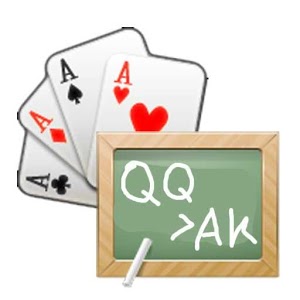To straddle or not to straddle on the button
Editor’s note: The following is from Jeff Hwang’s book, Pot-Limit Omaha Poker: Advanced Play Vol. I.
“People who don’t straddle go to hell.”
– Little Mike
The Mississippi Straddle: Yay or nay?
There are two basic types of straddles in pot-limit Omaha (PLO): the basic under-the-gun (UTG) straddle and the Mississippi Straddle. I’ll address the UTG straddle in a minute. Once you are armed with the more advanced positional skills – primarily the float, which I discussed in a seven-part series last year – the Mississippi Straddle becomes a much more potent device than before.
For those who have yet to come across the Mississippi Straddle, it is essentially a straddle that is posted on the button, and is generally double the big blind, although it might be $25 in a $5-$10 game or $5 in a $1-$2 game, depending on where you are playing. Technically, a pure Mississippi Straddle can be done from anywhere on the table, with the button getting first priority to straddle, the player to the right of the button getting second option, and so on. But in some places – such as at the Rio during the World Series of Poker (as of this writing) – only the button and the UTG player get the opportunity to post a straddle, with the button getting first priority. That said, for our purposes, we will treat the Mississippi Straddle as synonymous with straddling on the button.
In any case, the player to the left of the straddler – generally the small blind – acts first before the flop. This means that a player who straddles on the button gets to act last on every betting round, both before and after the flop. In addition, the straddle ensures that the biggest pots are played while you have the positional advantage.
Enhanced positional skills help to accentuate the advantages of the Mississippi Straddle, for a few reasons. The first is that once you master the float, you will be able to play a lot more hands from late position in general, and on the button in particular. And since you will be playing a lot of hands on the button and therefore can defend it liberally, you are not giving up nearly as much when putting in the blind from the button as you are when you post the straddle from under the gun.
The second is that the Mississippi Straddle promotes tighter play in front of you. The blinds – which now act first before the flop – will often just give up, while the other players may tighten up a bit, as well. This results in more shorthanded pots, which in turn improves the direct (but not necessarily the implied) value of virtually every starting hand; this is because when you play a shorthanded pot with positional advantage, you kind of expect to win the hand. This is particularly true if you are heads up after the flop.
The third reason is that you now act last before the flop, which enables you to play more accurately before the flop. For example, if both blinds fold, the UTG player opens with a raise, and everybody else folds to you, you are guaranteed to see the flop heads up with the positional advantage. Now you know that you can flat-call – rather than having to three-bet – and see the flop heads up with the positional advantage, giving you better control over pot size.
That said, the players at the table need to be deep enough for you to take advantage of them. For example, if you are in a $2-$5 game with a $1,500 stack but everybody else has $500, or 100 big blinds, you probably don’t want to post the straddle, as doing so would make it a $2-$5-$10 game and leave your opponents with stacks of 50 big blinds. But if, instead, everybody has $1,500 stacks, you should go ahead and post the straddle, assuming that you play the position game well. This is because everybody now would have effective stacks of 150 big blinds, keeping it a deep-stack affair.
So, the Mississippi Straddle is generally favorable, assuming the stacks are sufficiently deep. But what about straddling from under the gun?
My view on the UTG straddle is that it makes little sense to make what essentially amounts to a blind raise from out of position, particularly in a full-ring game. However, I will post the UTG straddle if everybody else is doing it and I want to make the game bigger. For instance, if you are in a $5-$5 game with a $2,500 stack and the game is small for you, you may want to post the straddle if everybody else is doing it, essentially turning a $5-$5 game into a $5-$5-$10 game. I also will post the straddle when playing three-handed, where allowed, as the straddle will be on the button, mimicking a Mississippi Straddle. In addition, I will post the UTG straddle when playing four-handed if the player on my left is tight and/or rarely raises before the flop.
This article was originally written by Jeff Hwang. Jeff Hwang is a semiprofessional player and author of Pot-Limit Omaha Poker: The Big Play Strategy. His latest book is Advanced Pot Limit Omaha Vol.1 and will be releasing Vol 2.
Submit your review | |










